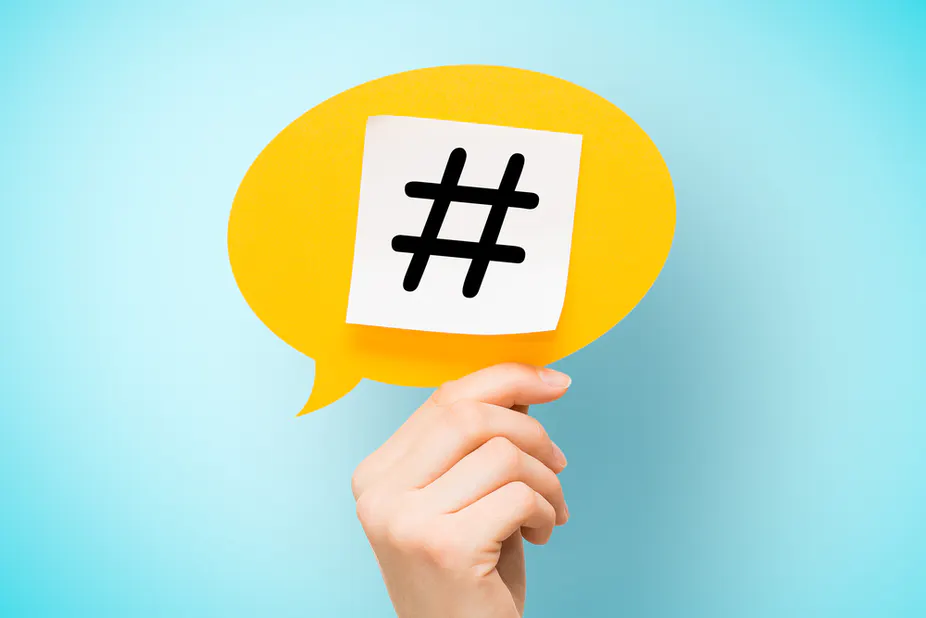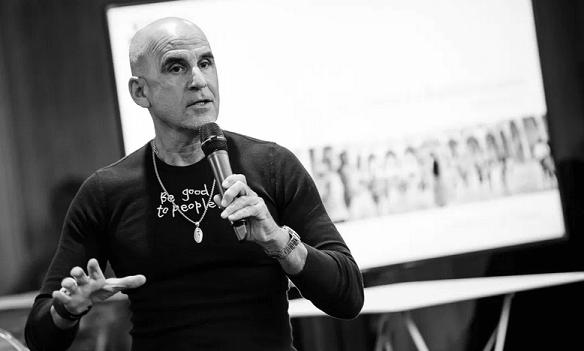By Prestige Media
In this article, we discuss an effective strategy to help you find trending, high-quality hashtags for your social media networking, and we also talk about why trending hashtags are important.
Hashtags across all social media networks these days are a powerful tool for brands both big and small. Using relevant hashtags on your social networks can serve a number of different purposes for your company.
Using trending hashtags can help you reach your target audience more, attract more followers to your networks, and increase your overall engagement.
Statistics show that social media posts that have more than one hashtag associated with them receive more engagement than posts that don’t include any hashtags.
However, it’s not simply about the number of hashtags that you use on your content, it’s about the quality of those hashtags. It used to be more about the quantity, but these days quality prevails, and the relevance and quality of your hashtags can significantly influence their impact.
In this article, we discuss an effective strategy to help you find trending, high-quality hashtags for your social media networking, and we also talk about why trending hashtags are important.
We will also share the best hashtag generator in the industry right now, Task Ant, and talk about why they can help you not only find the best hashtags for your content, but you can get help organizing them so that you keep your hashtag strategy unique, creative and varied.
Why Hashtags Are Important

Hashtags are basically the sorting mechanism for any social network out there, like Twitter, Facebook, or Instagram. What’s interesting is that hashtags don’t really have too much of an impact on Facebook these days; they are more relevant to networks like Instagram and Twitter.
Hashtags determine the social media reach of your content, and how discoverable that content is. They connect categories to your posts, which helps you to reach a wider audience.
Most social networks these days like Instagram and Twitter have millions of people posting new content every day. This makes it really difficult for most people to connect their content with the right people.
Hashtags make your content a lot more discoverable, especially by people who are actually going to be interested in your niche and industry. This is why hashtags are considered the most efficient tool if you are wanting to grow your social media network successfully.
On a fundamental level, hashtags are used to categorize your content more efficiently. They link you directly with your target audience and help your target audience find you as well, which is exactly what you need to do well with your social media profiles.
When you use hashtags on your content, you are more likely to have people interacting with your posts, because it includes content they are on the network looking for. It is essential that you understand that you might not always get the interactions that you want just because you have included some popular hashtags on your posts.
Millions of users out there make the most of popular hashtags, which means that you will be competing with a high number of others to rank well for that particular hashtag. This is why it’s important to narrow this down and get as specific as you can with your hashtag topic, which we will talk about a little bit later.
On social media networks like Instagram, you are allowed 30 hashtags in your caption. You need to be smart with the words that you choose to include, because you don’t want to go over this number, but you also don’t want to include too few as well.
Why Trending Hashtags Are Important

Trending hashtags, in particular, are important for your social media networking in general because they connect you with the relevant audience for your content right now.
Your brand’s ethos and products might not change too much over the course of a few years, but your audience will. This is why if you plan on investing a lot of time and money into social media marketing, you’ve got to constantly keep up with what’s happening in your industry.
When you use hashtags that are trending within your niche, you are giving your content a good chance of being seen by your target audience, and you are keeping up with what people are finding interesting right now.
Your products might not be changing all that much, but how you connect with your target audience through social media will change and switching up your hashtags to fall in line with what’s trending is really important.
Are All Trending Hashtags Good for Your Business?

With trending hashtags in mind, are all of them good for your business? There is a relatively short list of popular and trending hashtags that users make the most of all around the world.
Influencers on Twitter and Instagram make the most of these hashtags because they help them build their audience. For example, using the #likeforlike hashtag is a popular way to encourage people to like your content. The most popular hashtag on Instagram is #love.
When you use popular and trending hashtags on social media networks, this allows your posts to appear in places where there are millions of people that could potentially be interacting with your content. However, there are some aspects of trending hashtags that you need to be aware of if you choose to use them.
- Might target the wrong audience: If you choose to build your audience with some of the most popular hashtags in the world because you are competing against millions of others who are also using that hashtag, there’s every chance that you might be targeting the wrong audience. Additionally, if you use hashtags like #likeforlike, while this might encourage people to interact with their content, it might not be for the right reasons. They might be simply liking your content because you’ve asked them to, and not because they are genuinely interested in your content. If you want to find the most relevant users for your content, then you need to get specific with the hashtags that you use and try not to be too general.
- Hard to stand out: when you use hashtags that are really popular, this means that you are competing for attention with millions of other people and their posts. It means that even those posts that you have put a lot of time and effort into are going to quickly drown in the sea of competition and will wash up with a mix of content that doesn’t even fall into the same category as yours. There are some experts out there that believe that if you share a post with a hashtag that has more than 10 million posts associated with it, your post is going to appear in someone’s feed for only three minutes, before falling down the visibility list again.
- Could end up using irrelevant or inappropriate hashtags: If the hashtags that you use for your content are too popular, they could potentially be irrelevant to your content, and not even trending in your industry. What’s more, they might even be considered inappropriate by Instagram, as Instagram has been known to ban hashtags in the past. When you are trying to find the right hashtags for your content by yourself, is difficult to know whether that hashtag has a history of being banned or not, and you could get yourself into hot water as a result.
How to Know Which Trending Hashtags to Use

So, we’ve talked a little bit about the downside to trending hashtags, but this shouldn’t be enough to put you off. You have just got to know what you are getting yourself into and understand how to use trending hashtags to your advantage so that you can stick to relevant, targeted hashtags that connect you straight to your ideal audience.
Becoming successful with hashtags happens when you are able to maintain a strategic approach towards using them. Even though some of the most popular hashtags out there have been used with millions of posts, this doesn’t guarantee that your post is going to get a lot of interaction.
So, instead of trying to find the most popular hashtags out there, we recommend that you find trending hashtags that have an active community behind them, and are highly relevant to your target audience and industry.
So, how do you find trending hashtags like this? Well, we think that one of the best ways is to see what hashtags are being used by your competitors, target users, and industry leaders.
Remember, when you narrow down the scope of your hashtag, the more engaged your audience will be. When you start researching, you might be surprised to discover the kind of hashtags that are being used by your rivals.
Let’s take a little look at how to determine the best trending hashtags for your content.
There’s no way that you are going to be able to find the best trending hashtags for your content on social media without learning all about your target audience. As we already talked about, including random hashtags on your Instagram posts is not going to increase your followers.
First, you need to do a bit of research, and figure out what hashtags your audience is using on their content and choose ones that align with these. Most social media networks out there have a search bar, where you can search up relevant hashtags.
Just remember that your tags need to be relevant to the target users that you are actually searching for. This is why you need to include keywords that relate not only to your content, but to the people that are going to be looking at it.
While you might be a bit more excited about understanding your audience then understanding your competitors, your competitors can actually teach you a lot about what the industry is like, and how to be successful in it. If you want to do really well with your brand online, then it is extremely smart to keep a close eye on what your competitors are doing at all times.
Similar to how you can look up relevant hashtags on most social media networks, you can also find hashtags that your competitors are using. This is going to help you work out which hashtags are going to improve your engagement.
You might not always want to use the hashtags that you find on your competitor’s pages, but it’s going to definitely help you figure out how everyone else is growing their social media profiles. You might end up discovering completely new hashtags that you’ve never thought of that you can add to your list.
-
Understand the industry leaders
As well as your competitors, there will be some influencers and industry leaders in your niche that you look up to and wish you could be like one day. One of the most practical ways to find trending hashtags for your content is to follow industry leaders that have similar interests to your target audience.
Influencers are people on social media networks like Twitter and Instagram that perform really well with their content. You can make the most of their success by finding relevant tags to add to your content.
Make sure that you find those people that have done really well within your industry and are continuing to do really well. Because they are already strongly connected with their target audience, you will only learn good things from researching them.
Another effective, easy way to grow your community is to find trends that relate to your own hashtag. All you have to do is enter your hashtag in the search bar of any social network, and you will get some results.
You might even want to search for an Instagram image or video that contains a hashtag that is already working really well on your content. This is a great place to start, and it’s going to give you a lot of options that are directly related to the tags that you already use.
-
Look on the Explore Page on Instagram
If Instagram is one of your main social networks that you use for your brand, then you will be well aware of the Explore Page.
The Explore Page is where a collection of posts are generated by what you have previously liked and interacted with. Believe it or not, this is a great place to get hashtag suggestions, so that you can keep your content connected with your target audience.
The best part about the Explore Page is that you can access it both on desktop and mobile. The first thing that you will want to do is scroll down until you see posts that are relevant to what you’re trying to post yourself.
Click on these posts and look at the hashtags they are using. Make sure to use the ones that you think are the most relevant to your content.
-
Follow your favourite hashtags
If you have discovered a hashtag that is relevant to your content, try following it and seeing top posts once people share them. Looking up certain hashtags is going to help you develop new ideas and come up with even more tags that go along with the original.
All of the content that you put up that uses these hashtags will be pushed onto these hashtag pages, so you can easily follow other hashtags, and look at the top posts that fall into these categories.
Checking top posts can help you get new ideas for your hashtags and engaging with these posts can actually bring people over to your page.
Just make sure that the selection of hashtags you are including on your posts are relevant and directly reflect what your post is about. We don’t suggest that you create a crowded post that has a lot of hashtags.
Quality over Quantity

Speaking of crowded posts, let’s talk a little bit about why quality is more important than quality at this point when it comes to your trending hashtags.
If you have just started implementing certain techniques in your hashtag strategy, then you might be a little overenthusiastic about how many hashtags you include in your post.
However, if you want to do really well, and not compromise the potential of your content before it’s even out there and in front of the right people, we suggest that you take time to figure out a sweet spot when it comes to the number of hashtags that you use.
We mentioned above that Instagram has a post limit of 30 hashtags. However, we don’t think that you should use this many every time.
In fact, there are many people out there that think you should be using less than 10 hashtags per post – some people think that seven is ideal. The key here is to focus first on the quality of the tags, and the quantity will follow.
If you find three or four highly relevant, targeted tags for your content, then you won’t need to use any more than this to get your content in front of the right people. However, while you are still looking for those perfect hashtags, you might want to increase this number slightly.
One way to do this is to experiment a little bit and figure out what works best for your content and your engagement rate. If the number of tags you are using is resonating well with your target audience, then stick with this.
The good news is that your hashtag strategy can be ever-changing, and there’s always room for improvement. If you find a hashtag that you want to use, you can always add it to your existing list, or even replace one that you don’t think is as effective as it used to be.
As long as you are including more than one and less than 30, you will be able to find the right fit for your niche and industry.
Task Ant for Finding Trending Hashtags

Another way to find trending hashtags for your content is to make the most of a hashtag generator. Sometimes, you don’t have the brainpower or the time to figure out your hashtag strategy for yourself, and sometimes it seems like everyone has taken all the good hashtags.
This is where a hashtag generator comes in. A hashtag generator like Task Ant has the experience and expertise that you need to get ahead of your competition and polish your hashtag strategy until you’ve perfected it.
Task Ant has a search bar for hashtags that you will see on their homepage when you visit them for the first time. All you need to do is enter a keyword or hashtag that you use already, and they will suggest relevant tags.
The best part is that they include data and analytics around their suggestions so that you can work out which ones are relevant to your content, and which ones aren’t worth your time.
One of the things that we like the most about Task Ant is that they are willing to go the extra mile for their clients. They understand that finding relevant hashtags is only half the battle – you’ve got to keep things interesting on your content if you want to keep up with what’s trending.

This is why Task Ant helps you organize your tags into different sets so that you can apply different hashtags to each piece of content and keep it dynamic.
There aren’t too many hashtag generators out there that are prepared to do this on top of suggesting relevant tags to their clients, which is why Task Ant comes so highly recommended.
Final Thoughts
So, there you have it – everything you need to know about trending hashtags, how to use them, and what to look out for when you are doing your research. Remember that your hashtag strategy is a fluid thing – this means that it’s always changing, just like industry trends.
It’s important to keep up with the play and learn how to adapt your hashtag strategy to what’s going on with social media networks like Twitter and Instagram. Also, don’t be afraid to play around with the numbers, and try a different list of hashtags on each piece of content, until you’ve found a good match.
Mix it up from time-to-time as well so that you’re never relying on the same five or six hashtags for each post. Good luck!





 image:
image: 



 image:
image:  image:
image: 


 image:
image: 













